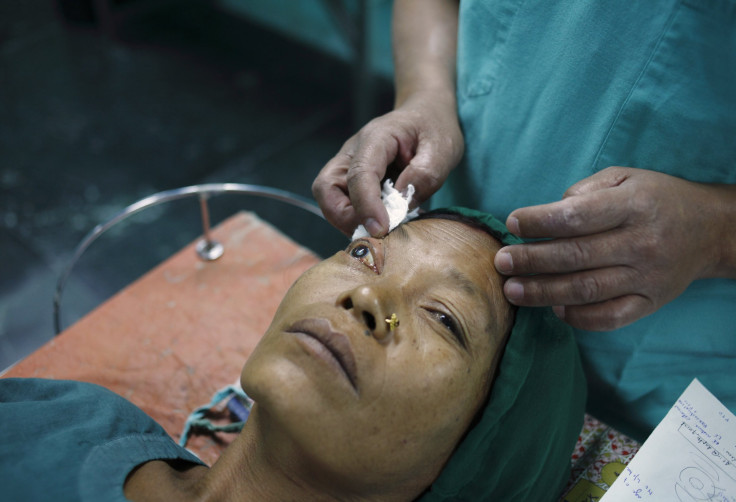Eye drops may reverse cataract when used with newly identified chemical

A chemical could be used in eye drops to potentially clear cataracts, the leading cause of blindness, a new study suggests.
The newly identified compound is the first that is soluble enough to form the basis of a practical eye-drop medication for cataracts, according to scientists from the UC San Francisco, the University of Michigan and Washington University in St. Louis.
A hallmark of cataract, a disease of aging, is the misfolding and clumping together of crucial proteins. In the case of cataracts, the affected proteins are known as crystallins.
Crystallins are the major component of fiber cells, which form the eyes’ lenses, and the unique properties of these cells make them particularly susceptible to damage, says Jason Gestwicki, PhD, an associate professor of pharmaceutical chemistry at UCSF and co-senior author of a paper on the new research.
In the new study, the scientific team identified the crucial difference between properly folded crystallins and their amyloid forms, which are harder to melt. The research group used a method known as high-throughput differential scanning fluorimetry (HT-DSF) in which proteins emit light when they reach their melting point.
The team began with 2,450 compounds, eventually zeroing in on 12 that are members of a chemical class known as sterols. One of these, known as lanosterol, was shown to reverse cataracts in a June paper in Nature, but because lanosterol has limited solubility, the group who published that study had to inject the compound into the eye for it to exert its effects.
Using lanosterol and other sterols as a clue, Gestwicki and his group assembled and tested 32 additional sterols, and eventually settled on one, which they call “compound 29,” as the most likely candidate that would be sufficiently soluble to be used in cataract-dissolving eye drops.
In laboratory dish tests, the team confirmed that compound 29 significantly stabilised crystallins and prevented them from forming amyloids. They also found that compound 29 dissolved amyloids that had already formed. Through these experiments, the team started to understand the mechanism in detail, Gestwicki says.
The team next tested compound 29 in an eye-drop formulation in mice carrying mutations that make them predisposed to cataracts. In experiments they conducted, the team found that the drops partially restored transparency to mouse lenses affected by cataracts, as measured by a slit-lamp test of the sort used by ophthalmologists to measure cataracts in humans.
Similar results were seen when compound 29 eye drops were applied in mice that naturally developed age-related cataracts, and also when the compound was applied to human lens tissue affected by cataracts that had been removed during surgery.
Gestwicki cautions that slit-lamp measures of lens transparency used in the research are not a direct measure of visual acuity, and that only clinical trials in humans can establish the value of compound 29 as a cataract treatment.
Cataracts, identified as a “priority eye disease” by the World Health Organisation, cataracts, are caused when the lenses of the eyes lose their transparency. The condition affects more than 20 million people worldwide. In Australia, around half of those aged over 65 to 74 have cataracts.
Although cataracts can be successfully removed with surgery, this approach is expensive, and most individuals blinded by severe cataracts in developing countries go untreated.
Contact the writer at feedback@ibtimes.com.au or tell us what you think below.





















